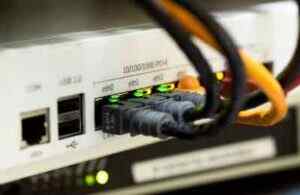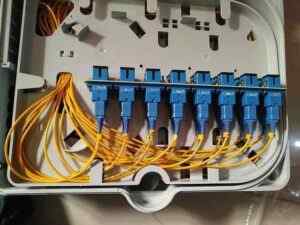Today we’re going to talk today about different Internet connections that are available to us, with a focus on what you can do to utilise them by making sure that they’re within your budget and that they make sure they are the best option for your business.
There are loads of different technologies out there, and it can get very confusing for a business owner that isn’t tech savvy. You shouldn’t have to be tech savvy to know what to get. People always talk about getting the NBN, but no one really knows what the NBN is. It’s kind of like the cloud. No one really knows what that is.
Get the best internet service for your business. Talk to us!
Brief History of the Internet in Australia
So originally you used to have to use your Internet connection over your phone and it stopped you getting calls. This then developed having a dedicated Internet connection. It then jumped across to having ADSL and ADSL2, which transmitted everything at a higher frequency so that you could have a voice call at the same time as your internet is connected. That was some cool stuff! It came along with a bunch of speed benefits and now you can get up to 25000 kilobits per second as opposed to what we’re getting before, which was only 56, so that was great with ADSL2.
Internet Speed Differences

There’s cable Internet in Australia and you shouldn’t be running your business on cable Internet, but if you are or you’ve got that at home, it can go up to 100 in the speeds at the moment. Telstra is increasing the network to be able to get them to go up to 400 in some areas too.
What is the NBN?
The NBN is kind of a collective term that they use for new Internet technologies and they come in lots of different variants and forms. The short of it is, the NBN came and bought about with it faster Uplink speed, which means when you’re sending an email or file somewhere else the speed for you to send the file is much quicker. Most NBN connections in Australia are around 100 megabits per second, which is four times quicker than ADSL2. This speed may be increased that 400, which means it could be 16 times quicker than the ADSL2.
Some Problems You May Encounter
A problem with different technologies is that’s the physical best speed you’re ever going to get. There are so many variables so it is hard to achieve the maximum speed. Your Internet connection is joined back to your exchange, which is where all your cables come through. Then that’s when they’re piped off to wherever they’re going, but your exchange to your business premises. If the cabling is no good or if it’s really, really long, it’s going to reduce down the speed. Using that car analogy, you’ve got this fantastic highway, you’ve got this fantastic car, and this car can go 100 meg or 100 kilometres an hour. 100 meg is what is cruising down the highway but then this car has to go on this really, really dodgy part of the road, and that means it can’t go at 100k an hour because if it does it will crash. Unfortunately, that is what most of the connections are in Australia, they are dodgy tracks between your business and the exchange. You need to make sure that you’re looking potentially at other technologies.
Make the most of your internet service and stay ahead of the competition. Let’s talk about your options!
Consider Microwave Internet Connection
Microwave is a great technology that allows you to have a direct connection from your business. This connection cruises straight to wherever the receiver, which means you’re bypassing any of that track. The problem with microwave technology is that if you have bad weather, clouds, buildings obstructing the way the signal can be interrupted. On one hand, it can be reliably faster, but it is also way more expensive for your business. We’re talking the difference between a few hundred dollars for a standard Internet connection jumping up as to a couple thousand dollars per month for that same comparable speed but connected with a microwave antenna. I’d say this a good idea depending on how mission critical your Internet is to have both technologies, but if you’re running a business that isn’t dependent on the internet it’s probably not important to be worrying about it.
Fibre Internet

Because the NBN has been rolled out so quickly throughout Australia, it’s not a great fibre connection because they’ve used inferior optics. Copper cables would normally last a couple of decades comfortably, while fibre optic cables after eight years have started being pulled up and replaced.
Bonded Pair Connection
One of the other technologies you can do if you’re not happy with your internet speeds at work is grabbing what’s called a bonded pair connection. Doing this will give you several connections coming to your location and they will be joined all together and then send it to your office. As mentioned earlier, it is smarter to get a 100 meg connection instead of 25 that is achieved with ADSL.
With a bonded pair connection, you would have had four of your chosen connections so it will be 100 meg for ADSL and 400 for NBN or the cable connections. If the connection is a bit of a dirt track between the exchange in your business, it will be taken up and accommodated for with the other connections.
There’s a website called adsl2exchanges.com.au, and what they do is show you how fast your Internet connection is where you are. Most of the time with ADSL2 connections where they have a theoretical 25 speed, they actually only go between 8 to 12. Most of the NBN connections where they have a connection that’s 100 will normally go between 60 to 80. But this gives you a good idea and understanding of where you sit.
Ensure your business gets the best internet service possible. Ask a dork!
Final Word
I hope this information has been useful in helping you decide what internet connection is best for your business. In the end, it all comes down to your business priorities, how fast of a speed you need and how reliable the speed needs to be. Stay good!





























